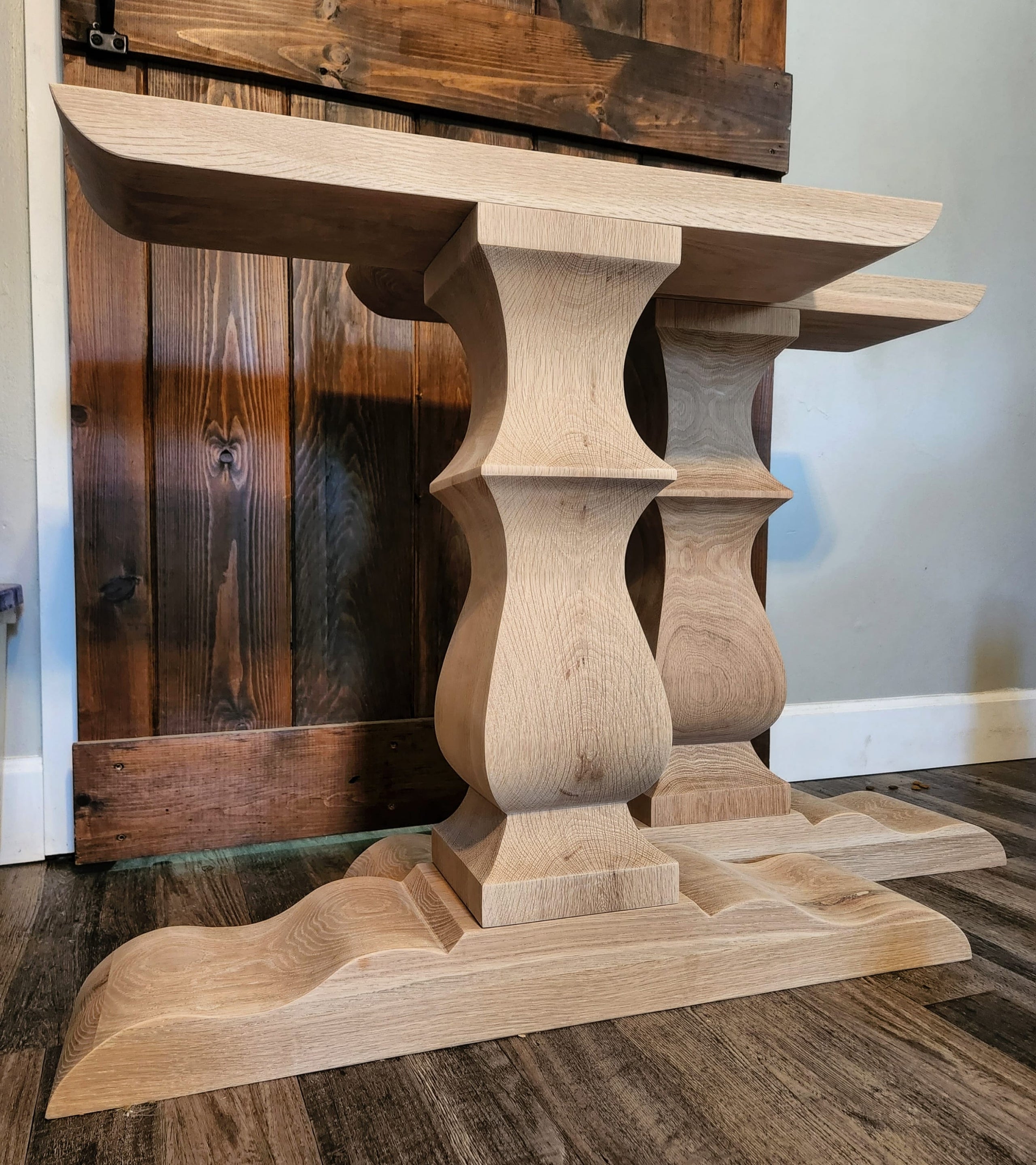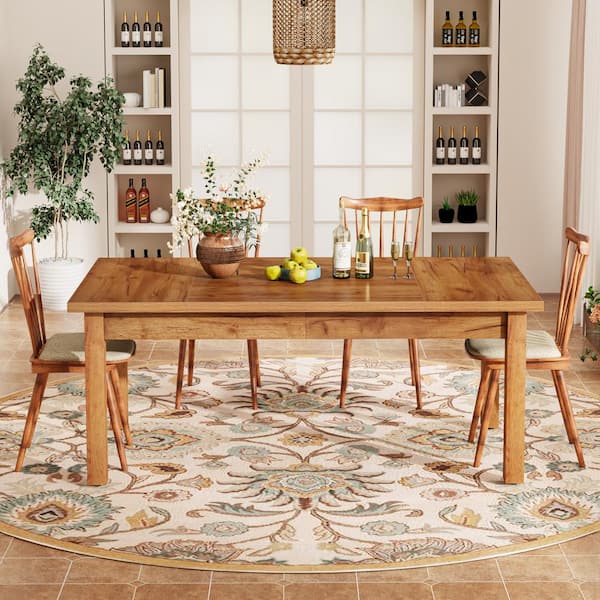A Detailed Check Out Eating Table Leg Styles: Discovering the Ideal Suit
Choosing the best table leg design is vital for both aesthetic appeal and sensible performance. Conventional four legs use ageless elegance and security, while the pedestal base provides boosted legroom and a contemporary appearance. For those with bigger tables, trestle legs guarantee tough support, whereas hairpin legs present a mid-century modern ambiance with their minimalist layout. The x-shaped legs blend modern style with improved stability. Each of these alternatives brings distinct advantages, making the option greater than just an issue of preference. Discover additionally to discover which style flawlessly matches your eating space and way of living.
Typical 4 Legs
Amongst the numerous kinds of dining table leg styles, the conventional four-leg design remains a timeless selection for several houses. 4 legs offer balanced support, ensuring the table continues to be secure and capable of bearing substantial weight (dining room table legs).
From a visual viewpoint, the standard four-leg design can be easily adjusted to different interior designs. Whether crafted from timber, metal, or a combination of products, these legs can be elaborately carved, sleek and minimalistic, or anything in between. Their convenience enables them to complement both rustic and modern setups perfectly.
Moreover, the uncomplicated structure of the four-leg layout assists in simplicity of activity and positioning within a room. Unlike even more complicated bases, this design lessens obstructions, giving adequate legroom for diners. In recap, the typical four-leg dining table leg design marries enduring style with useful functionality, making it a sharp choice for those looking for both form and feature in their dining furnishings.
Stand Base
Frequently commemorated for its classy and space-efficient design, the pedestal base is a recognized choice to the typical four-leg configuration in dining table leg styles. Without corner legs, restaurants are managed greater flexibility of activity, making it a suitable choice for round and oblong tables that promote even more intimate and comprehensive celebrations.
In addition, the stand base's central support can deal with substantial weight, enabling using much heavier table tops, such as marble or thick wood. This stamina paired with its visual adaptability makes the stand base a prominent selection in both typical and modern indoor setups. It can effortlessly incorporate with different style themes, from classic beauty to minimal modernity. In addition, the main column itself offers a canvas for intricate layouts and artistic expressions, adding a component of aesthetic passion under the table. In recap, the stand base combines functionality with design, making it a fine-tuned and functional option for varied eating environments.
Trestle Legs
Trestle legs provide a durable and timeless structure for dining tables, identified by their horizontal cross-bracing and tough support beams. Originating from middle ages times, this style has actually progressed yet retained its crucial structure, making it a seasonal favorite in both typical and contemporary setups. The central trestle beam of light, frequently sustained by two or more upright messages, supplies extraordinary security, enabling for bigger table sizes without the requirement for added legs.
A significant benefit of trestle leg tables is the enough legroom they provide. Unlike tables with 4 edge legs, the absence of blockages at the table's sides provides unobstructed room for chairs and diners, improving convenience and availability. This makes trestle tables optimal for suiting larger events, whether in a dining-room or a banquet hall.
The aesthetic adaptability of trestle legs is significant. Available in a Your Domain Name range of materials such as wood, steel, and composite, they can be finished to enhance a vast array of indoor styles. From rustic farmhouse to sleek contemporary styles, trestle legs can be tailored to match specific tastes. Their enduring appeal and functional benefits make trestle legs a compelling option for those looking for both design and usefulness in their eating table.
Barrette Legs

The allure of hairpin legs hinges on their simpleness and flexibility - dining room table legs. Offered in a series of materials, consisting of steel and brass, they can be ended up in numerous colors to match various interior styles. Whether combined with a rustic wood table top or a contemporary glass surface, barrette legs easily mix functionality with a touch of vintage appeal
Longevity is another noteworthy attribute of barrette legs. Regardless of their delicate appearance, these legs are engineered to bear considerable weight, making sure the table continues to be stable and safe and secure. In addition, go to my blog they are relatively easy to install, making them a prominent option for DIY lovers and expert furnishings manufacturers alike.
X-Shaped Legs

Created from materials such as steel, timber, or a combination of both, X-shaped legs can Recommended Site be tailored to match numerous design preferences. Steel legs often provide a streamlined and industrial feeling, perfect for loft-style apartments and contemporary eating spaces. On the other hand, wood X-shaped legs offer a warmer, much more rustic allure, suitable for farmhouse or eclectic interiors. The convenience in materials enables home owners to customize their dining tables to better fit their total layout scheme.
Furthermore, the engineering behind X-shaped legs makes sure also weight circulation, decreasing the threat of tottering and enhancing resilience. This makes them especially appropriate for bigger table that need extra assistance. Essentially, X-shaped legs mix functional design with contemporary appearances, making them a classic selection for varied eating atmospheres.
Final Thought
A detailed understanding of table leg designs discloses the distinctive features and advantages of each layout. Conventional four legs offer security and classic allure, while stand bases offer legroom and a streamlined appearance. Trestle legs make certain durable assistance for larger tables, and hairpin legs introduce a mid-century modern-day visual. X-shaped legs combine modern design with enhanced security. Picking the proper leg style guarantees both functional and visual contentment in any type of dining room.